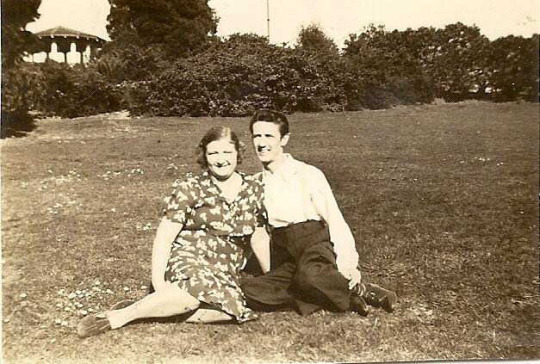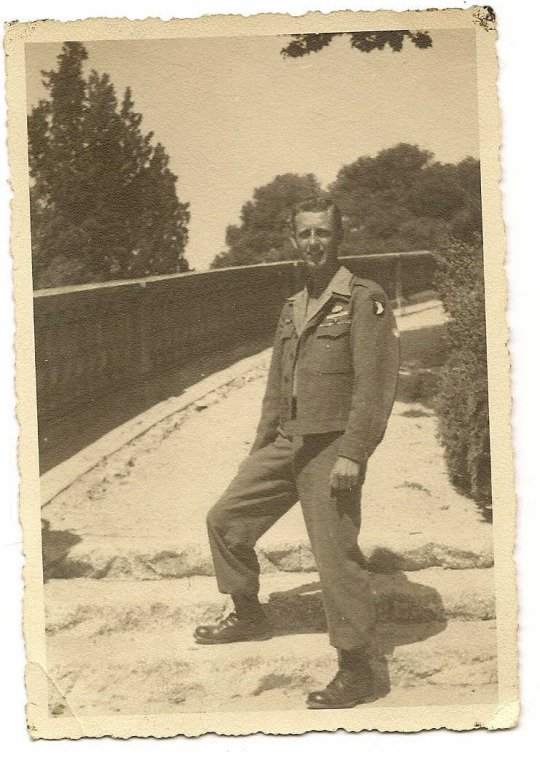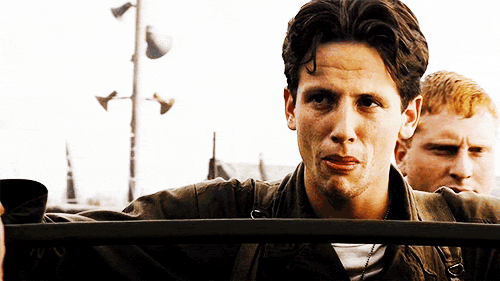#ss Yuma’s story
Note
look, the truth is Yuma is no Shoma when it comes to musicality, presentation and artistry. sure, he has the best SS in the field now, but in the FS especially his SS actually worked against his overall program, Yuma comes across as too smooth, too fast, did not have any connection with his music whatsoever despite the complexity of his transitions, his step sequence was great but the utter disconnect with everything that come before it also makes the program not easy to receive. meanwhile Ilia skated that FS with full commitment to his music, better showmanship and even a better costume (this is unacceptable IMO. yes its early in the season but letting it's embarrassing to let Ilia have the better costume) and he completely outperformed Yuma from start to finish despite having worse SS. listen to the live audience's reaction, so much louder for Ilia. and these things matter. I think this is still too early of course and there's no way but up for Yuma after this. but Ilia clearly came to Lombardia specifically to discredit Yuma and make an attack on his scores and he accomplished it very successfully.
I don't think Ilia going to Lombardia was an attack on Yuma tbf. This season the main contenders have actually only two places to perform - Lombardia Trophy and Nebelhorn Trophy - with everything else being close to the GP series and Finlandia falling off and US Classics being an ice dance and Pairs event only. And believe me when I say that even as a German Nebelhorn Trophy is a pain in the a** to get to, so I understand why Ilia chose Lombardia. The scoring isn't Ilia's fault either, so to say he had that in mind when performing there is a stretch.
The problem lies with the judges. Judges should not be blinded by super engaging fun programs and if that's the factor for PCS than that's plain wrong. Skating skills should not be awarded for having a program that goes with the audience. And if that would be true that judges would only go for that then skaters would all just do show numbers, but no it's specifically Ilia that is rewarded here for what??? Commitment to the program? The cheering of the audience??? A "better costume than Yuma"??? These are not parts of the PCS. (And if that would be the criteria than what about so many other skaters who commit wholly or had fun programs they don't magically have better PCS. Josefin Taljegard, Kazuki Tomono, Koshiro Shimada come to mind...)
Judges are human so ofc they also fall for things like this, but they are professionals they should award correct points which they don't. And Yuma should be awarded on skating skills even if it makes it "work against" his program where I see your point but I think especially the step sequence shows that he can be sharper. He still needs to work on it, yet the complexity and the skating skills should be rewarded, that's what these compartments of programs are for. And just bc Yuma's is not so much on the nose, doesn't make it a bad or boring program. I also wouldn't say Yuma has no connection to his music but that's probably based on what you think of as "connection to music". Yuma is the better skater and this should be reflected in the PCS and guess what it wouldn't change a thing about the placements to give Ilia just a few points less than Yuma. He would still win with his TES and this is where it's a circle and why ppl are not taking the scoring seriously. High TES should not give you high PCS. End of story.
Ilia will win with his TES there is just no need to make him the most skilled skater in all compartments when he is visibly not. Maybe not visible for every fan but for professional ppl inside the sport and it just gets laughable.
Tbc this is not to bash Ilia in any way he works with what he can do and the judging is not his fault. His technical ability and technique is crazily good. His skating skills however are not that good to be getting 9s. One judge even gave his FS 97!!!! PCS if that's not a clownery than what is.
13 notes
·
View notes
Text
The talk - Yuma comes to visit Kwan unexpectedly, only to discover she has other plans
(Shout out to @thisisthem @glorianasims4 @untraditionalnerd @leahlillith & more for helping to bring my beings to life 🖤🤘🏾)





#sims 4 gameplay#sims 4 story#spinstersimmer#del sol valley#ss kwan’s story#ss Yuma’s story#ss Kwan+Yuma#lgbtqia#nonmonogamy
1 note
·
View note
Text
Joseph “Joe” David Liebgott

The Real Joseph Liebgott:

Joseph David Liebgott was born in Lansing, Michigan in May 17, 1915 to Joseph (Josef) Liebgott Sr and Mary. Joseph Liebgott Sr was of German descent, but he was born in Beresztocz, Hungary. Joe’s mother was Yugoslavian, but was reported as born in either Yugoslavia or Hungary I am not sure which one because records show both. On his father’s side his grandparents were Yugoslavian as well. On his mother’s sider, they seem to be from Hungary. His mother immigrated in 1909, Lieb’s father immigrated in 1912.
Below is a picture believed to be his parents.

He was the oldest of his siblings. He has four sisters: Mary, Elizabeth, Anna, and Barbara, and one brother, Stephen/Steffen . Both of his parents spoke German, which would later help him during the war. His father worked in the auto industry before they moved.
His family soon moved to California around 1927 and his dad became a barber. He was the oldest of his siblings, one brother and four sisters. He was extremely protective of his younger sisters
Liebgott and his siblings attended Catholic schools. This is where learned how to box and played soccer.
After high school, Liebgott drove a taxi around San Francisco. This career was temporary and he soon attended barber college.
He was also previously married before the war. He was married in July 31, 1933 to a woman named Frances. They had one child, David Albert together on February 27, 1934. But the couple soon divorced within a year, and he was living with his family again by 1940, where he was working on a forestry project. Meanwhile his ex-wife and son moved into her family. Here is Joe and Frances:

He eventually became a barber and this was his career when he enlisted at the age of 26. Liebgott chose the paratroopers to be able to make more money to be able to put a down payment on his parents’ house.
Included is a photo of Joe and his mother

He has a Jewish service card, registered under his mother’s name. But his family denied he was Jewish, stating he was a German Roman Catholic. I’ll attach it below (filtered for safety).
In his draft card he is listed as 5 feet and 5 inches tall and was 109 pounds. He had blue-grey eyes and brown hair.


Malarkey remembers meeting Liebgott on his way to Toccoa where they became part of the original Toccoa men. Liebgott was trained under the harsh command of Herbert Sobel.
Liebgott didn’t talk much about the war, so there will be little but other’s words to put here. This is a photo from 1945 in France.

Right before the jump out of the airplane, he put his barber skills to use and gave a few of the men Mohawks.

He would jump out of the airplanes with the rest of the men on June 6, 1944. He received the bronze star for his bravery at Brecourt Manor, where he worked with Winters and several other men, Compton, Guarenere, Wynn, Lipton, Toye, Malarkey, and Ranney to destroy a German Battery firing on Utah Beach on the day of the D-Day Invasion.
He cut off the finger of a German that he had bayoneted and took the man’s ring near Carentan. At Carentan, Ed Tipper was seriously wounded after clearing out a house with Liebgott. Liebgott grabbed Tipper, yelled for a medic, and told Tipper that he’d be okay. Welsh and Lieb dragged Tipper into the street until Welsh could get him back to the aid station.

After Brecourt, Compton recalls a painful memory with Liebgott in his book, Call of Duty, Compton and Liebgott were patrolling along hedges at dusk. Across the way, in another set of hedges were two men. Both were dressed in German ponchos, one was holding a German gun. Assuming that these men were in fact German, he and Liebgott shot the men. Come to find out, when they checked their dog tags, they were not Germans. They were Americans. They had just killed fellow soldiers in friendly fire.
October 5, 1944. Winters sent a few Youmen out on patrol to take an outpost near a windmill. Liebgott and a few other men (James Alley among them) went with Sgt. Youmen. They sent one man ahead, to look out over the dike. The man spotted German machine guns. German voices approached the remaining boys. Lieb called out for the Youman, as we was trailing behind, only to have grenades thrown at him and the other men. Liebgott got minor wounds while James Alley received 32 shrapnel wounds in his left side, stretching from his face down. They’d run into a company of SS.

Liebgott was known for being rough with prisoners, the fighting that followed the injuries wit the SS company was a prime example of this. After Winters led his patrol to attack these Germans, in which during the fighting they lost William Dukeman, 7 Germans surrendered. The most famous story of Liebgott is as follows, in Dick Winter’s words.
As Winters explains in his book, “Tech/5 Joseph D. Liebgott had been slightly wounded in the arm, but he was ambulatory so I assigned him the mission of escorting seven German prisoners to the rear. Liebgott had earned the reputation of being one of Easy’s best combat soldiers, but we had all heard stories that he was very rough on prisoners. Liebgott was one of Easy Company’s “killers,” so I deemed it appropriate to take a bit of caution. When he heard me say, “Take the prisoners back to the battalion command post,” he replied. “Oh, boy! I’ll take care of them.” In his exuberance, Liebgott stood up and paced back and forth and he was obviously very nervous and concerned. I stopped him in his tracks. “There are seven prisoners and I want seven prisoners turned over to battalion.” Liebgott was highly incensed and started to throw a tantrum.Somewhat unsure of how he would react, I then dropped my M-1 to my hip, threw off my safety, and said, Liebgott, drop all your ammunition and empty your rifle.” There was much grumbling and swearing, but he did as I had ordered. “Now,” I said, “you can put one round in your rifle. If you drop a prisoner, the rest will jump you.””
Liebgott got all 7 prisoners back.

Joe would recover in a hospital in England with Webster, but he was back before Bastogne. Here is the record for that:
Name:Joseph D Liebgott
Race:White, includes Mexican (White)
Rank:Enlisted Man
Admission Age:29
Birth Date:abt 1915
Admission Date:Oct 1944
Discharge Date:Nov 1944
Military Branch:Infantry, Parachute Troops or Units
Diagnosis:FirstLocation: Ulna, generally; CausativeAgent: Artillery Shell, Fragments, Afoot or unspecified
Type of Injury:Casualty, battle
Injured in Line of Duty:In line of duty
Type of Discharge:Duty
Length of service:2 Year(s), 6 Month(s)
In Bastogne, Winters made him a runner to get away from the tension and constant stress of fighting.
One story of his service was outside of Foy is the battle of Noville, he and Earl Hale ducked into a barn and took 6 SS officers prisoner. Outside the barn, a shell exploded. One of the SS officers took this as an opportunity and jumped Hale. He slit Hale’s throat. Liebgott instantly shot and killed the officer. He then killed the others. Hale survived miracuously.
At some point, before the end of the war, Liebgott became first platoon’s interpreter-radioman. This was because he could speak some German. But Webster claimed in his book that the German’s didn’t understand his Yiddish.
He was with Webster when they took Hitler’s Nest. They spent their time drinking Hitler’s alcohol together with a few other men. He was living with Headquarters Company while there.
Of course, the war came to an end and everyone who wanted to was discharged.

Over the course of the war, Lieb was injured 3 times and won 3 purple hearts. He refused one because the wound was “just a scratch”. He would receive partial disability for his wounds.
When he returned home, he disappeared for two years. Eventually he was found living in Yuma, California. He didn’t come to reunions, even when offered multiple times. His father simply told the vets “not to mess with him”.
After the war, Liebgott was a barber for a short time. He married again to a woman named Peggy in 1949. They had eight kids together. Making Lieb’s total children come to nine, although he was mostly involved with the last eight. They lived on a barber’s salary, not leaving much room for fun activities but everyone had their basic needs met. He often only had one day a week off and would take his kids to a Long Beach pike, where they would visit an amusement park.
Liebgott liked to bet on the ponies at the racetrack. Every other sunday, him and his boss would take the boss’ airplane down to Mexico.
He is believed to have never contacted anyone from his days in Easy Company. He just wanted to get away from the war.

The Liebgotts divorced in April of 1969. She remarried, but he never did. He was described as really quiet by his granddaughter.
She states, in Marcus Brotherton’s book Company of Heroes (pages 120-121) “His hands looked like a man who worked with his hands, sunspots all over. He absolutely loved his grandkids. he had false teeth that he flipped out of his mouth and smiled, threatening to kiss us with his gums. He was a tickler. He never held babies over his shoulder...because he wanted them to see everything....He didn’t have a lot of money - I’m pretty sure all he had was his veteran’s benefits...He made all of the bikes for the grandkids by scouring thrift stores for dilapidated bikes. He stripped the bikes down to their frame, fixed and assembled them as good as new. He let each grandchild pick the color of new paint for his or her bike....I always knew the specific foods we were going to eat at his house. He had bite-sized candy bars and store brand soda-pop. There was no drinking water in his house. He always lived in rental houses...”
He was very neat, and keep his house and appearance orderly. However, he was always working in the garage, so the house had black smudges from the dirt on his hands.
However, Liebgott was not perfect. While he hated the Nazis, he was also seen as a bigot, maybe even harsher. Rhonda explained that he threw the n word around like it wasn’t a big deal. He blamed the wrong goings of the world on different ethnic groups. Rhonda started seeing a guy from El Salvador, he asked if her partner “even spoke English?”
As he grew older, Lieb got sicker. He eventually lost the use of one of his legs from a hernia. He was confined to a chair and hated any new technology. He was stuck in a wheelchair, angry when he would hit a cabinet.
Lieb did not talk about his military career until towards his end. He would spend time with his son Jim, watching tv talking about the war during a war movie. He would talk about the war when he was mad, possibly angry at himself for doing a lot of killing and other things that people his age shouldn’t have to do.
In 1992, Liebgott developed a tumor in his neck, near his windpipe that would cause a lot of pain. Jim took him to the hospital on Father’s Day. Shortly later, on June 28, 1992 Liebgott died. He was against a funeral and just wanted to be cremated, so his family did as he wished. They still have his ashes and letters and the Toccoa book.

#Real Life Band of Brothers#real band of brothers#joe liebgott#joseph liebgott#band of brothers#Band of Brothers fandom
296 notes
·
View notes
Text
Tokyo 24th Ward: svelato il nuovo anime originale di CloverWorks, arriverà a gennaio
A dirigere la serie c’è Naokatsu Tsuda, regista delle prime quattro stagioni de Le Bizzarre Avventure di JoJo.

Oggi, a sorpresa, lo studio CLOVERWORKS (Horimiya, Shadows House) ha presentato un nuovo progetto originale chiamato “Tokyo 24-ku” (Tokyo 24th Ward), che andrà in onda sulle tv giapponesi a partire da gennaio 2022.
La serie animata è diretta da Naokatsu Tsuda, regista delle prime quattro stagioni de “Le Bizzarre Avventure di JoJo”, nonché dell’anime di “Inu x Boku SS” e della miniserie tratta da “Planetarian”. Ad occuparsi della sceneggiatura è, invece, Vio Shimokura, scrittore di visual novel per Nitroplus, che ha lavorato sugli scenari di titoli come “Tokyo Necro”, “You and Me and Her: A Love Story” e “Minikui Mojika no Ko”.
youtube
I tre protagonisti della storia sono:
Shuta Aoi: Junya Enoki (Yuji Itadori in Jujutsu Kaisen)

Ran Akagi: Yuma Uchida (Kyo Soma in Fruits Basket)

Koki Suido: Kaito Ishikawa (Noé in The Case Study of Vanitas)

Le vicende si svolgono nel cosiddetto “Distretto Speciale dell'Estremo Oriente al di fuori della legge”, chiamato da più semplicemente 24t° Distretto. Su quest’isola artificiale, nei pressi della baia di Tokyo, sono nati e cresciuti Ran, Koki e Shuta. I tre ragazzi provengono da posizioni sociali diverse, non hanno gli stessi hobby e hanno personalità ben differenti, ciò nondimeno sono amici inseparabili sin dall’infanzia. Il loro rapporto, però, cambierà radicalmente in seguito ad un certo evento.
Ad un anno dal fatto, i tre si incontrano di nuovo e, ad un tratto, i loro telefoni iniziano a squillare contemporaneamente. La telefonata è di un amico che credevano morto, che li esorta a “scegliere il futuro”. Ognuno di loro, tuttavia, avrà un’idea tutta sua su come proteggere l’avvenire del 24° Distretto.
Il character design è stato concepito da FiFS, pseudonimo dietro al quale troviamo il duo composto dal mangaka Shuji Sogabe (Persona 3, Persona 4) e la designer Kanako Nono (Prince of Stride: Alternative). Ad adattare il design per l’animazione ci pensa Takahiro Kishida (Durarara!!, Haikyu!! L’asso del volley), mentre le musiche sono composte da Hideyuki Fukasawa (Fate/stay night: Unlimited Blade Works, Aku no Hana).
* NON VUOI PERDERTI NEANCHE UN POST? ENTRA NEL CANALE TELEGRAM! *

Autore: SilenziO)))
[FONTE]
#tokyo 24th ward#tokyo twenty fourth ward#tokyo 24 ku#anime#serie tv#cloverworks#newsintheshell#animazione#cartoni animati#news in the shell#giappone#naokatsu tsuda#vio shimokura
3 notes
·
View notes
Note
Est-ce que tous les diaboys (sauf Laito bien sûr) sont vierges?
Hum, c’est dur d’y répondre. ^^;
Attention! Spoilers!
Selon moi, je dirais que les frères Sakamaki ne sont pas vierges. Déjà, on sait que les frères Sakamaki reçoivent des vierges sacrificielles de l’Église. Dans le tout premier jeu (HDB), il me semble que certains des Diaboys ont violé de nombreuses filles… ainsi que Yui! Si tu choisis Ayato, il y a un chapitre où il était sur le point de violer Yui dans un placard (à l’école) avant d’être interrompu par Reiji. Il n’avait pas du tout l’air d’être mal à l’aise, donc… Si tu choisis Kanato, lui et Yui ont eu des rapports sexuels de nombreuses fois. En fait, c’est avec ce personnage que l’adolescente a le plus de rapports sexuels entre elle et un Diaboy… Du moins dans HDB. Shu… eh bien… je ne sais pas comment l’expliquer. Certaines personnes vont se dire que Subaru est vierge parce qu’il a un comportement tsundere avec Yui. Il faut savoir que s’il se comporte comme ça, c’est parce qu’il a passé la majorité du temps/de sa vie à être seul. Un rappel: si tu choisis Subaru, dans l’un des chapitres de HDB, Subaru dit que la virginité de Yui l’appartient. Je pense que cette phrase en a dit assez pour répondre à notre question. Reiji, je dirais que c’est le seul Sakamaki qui est peu intéressé au sexe et n’ayant possiblement pas eu de rapport sexuel avant de rencontrer Yui. Il a des choses à faire pour passer le temps. Par exemple, il nettoie le manoir, il cuisine, il fait de la chimie/des drogues/des potions.
Concernant les frères Mukami, je ne suis pas certaine. Je ne crois pas que ce soit le cas pour des raisons similaires à Reiji. Ils ont des choses à faire pour passer le temps. Ruki lit, fait des puzzles/casse-têtes, cuisine, nettoie la maison, Kou est occupé avec sa carrière d’idole, Yuma s’occupe de son potager/jardin, Azusa… euh… il s’automutile? Ils passent aussi des moments en famille. Par exemple, ils mangent toujours ensemble. Il est possible que Yuma n’a jamais eu de rapport sexuel auparavant, car dans sa SS (Short Story) On a Quiet Night de More Blood, après son mariage avec Yui, on peut lire et comprendre que Yuma n’a pas vraiment d’expérience avec ce genre de chose.
Il est fort probable que les frères Tsukinami ont déjà eu des rapports sexuels auparavant. Si tu choisis Ayato dans Dark Fate, il y a une mauvaise fin où Carla prend l’apparence d’Ayato pour avoir des rapports sexuels avec elle et avoir des enfants de la même espèce que lui. Si tu choisis Carla dans Dark Fate, il y a une scène où Carla dit que si Yui veut se faire violer, ça ne lui dérangerait pas de le faire. Dans l’histoire de Ruki (Dark Fate), si tu obtiens la Fin Brutale, Ruki et Yui ont un enfant… qui est de la même espèce que Carla et Shin! On peut donc en déduire que Shin a violé Yui.
Pour Kino, honnêtement, je ne le sais pas.
Tous les vampires ont un côté très pervers envers l’héroïne, c’est un fait. Pauvre Yui… (TдT)
#Otome#Rejet#Diabolik Lovers#Dialovers#DL#Ayato Sakamaki#Kanato Sakamaki#Laito Sakamaki#Shu Sakamaki#Reiji Sakamaki#Subaru Sakamaki#Famille Sakamaki#Ruki Mukami#Kou Mukami#Yuma Mukami#Azusa Mukami#Famille Mukami#Carla Tsukinami#Shin Tsukinami#Famille Tsukinami#Kino#Analyses
6 notes
·
View notes
Note
oh wait it's not a cd (I don't think), it's actually a short story. if you search 'More Blood Versus SS Shu vs. Yuma Translation' it should come up
Ohhhh I see, I see. Thanks for letting me know! I shall check it out sometime this week. I’ve been behind reading translations due to summer school classes and driving lessons. (asdfghjkl; I’m praying I won’t be terrible at it omg send me your prayers and luck, everyone.)
-Admin Yuuzuki
6 notes
·
View notes
Text
Standing in the oppressive heat of the desert between Tucson and Phoenix I feel a very long way from the green, rain-soaked valleys of Cornwall. It is a vast and untamed landscape like nothing I have ever experienced before in all my travels, yet thousands of Cornish found themselves drawn here in the 19th century. Some found their fortunes, others hardship and loss, or worse.
“These dry, rocky places are made of drought, created by absence, the sky holding back on purpose . . . Deserts are mummifiers, bone makers.” Craig Childs, Essays from Dry Places, Arizona, 2019
So, how did one particular Cornishman come to end his days in the deserts of Arizona more than 5000 miles from home? And was his death just a unfortunate tragedy or something far more sinister?
The Bodies of Two Men
On 17th May 1894 a report appeared in the Mesa Free Press, the newspaper for the Maricopa county of Arizona. It read:
The bodies of two men were found a few days ago on the desert near the Congress mine. One of them left a note giving their names as William Rogers and Wm. McDonald.
The bodies had been initially discovered in early May. In the days that followed more information about the circumstances surrounding the deaths and the contents of the note began to emerge.
It was established that one of the men was William Rogers from Cornwall.
William Rogers
William was born in Ashton near Breage in 1869. He came from a long line of miners. Both his father Francis and both his grandfathers worked underground. His parents, Francis Rogers and Thomasine Kitto, had grown up together in the village and married in 1854. William was their youngest of five children.
On the 29th July 1889 aged 21 William Rogers boarded the SS Umbria and began the long voyage to the USA. The log records his name, age and occupation – miner.
SS Umbria 1884, Francis Frith negative no. 26619.
Cornish in Arizona
The stalling of the Cornish mining industry in the early part of the 19th century forced Cornish miners to search for work in other areas of mineral production, such as South Africa, Australia and America. It is estimated that more than 500,000 Cornish left their home in the 19th century.
Initially, many settled in Wisconsin and Michigan. Later making their way further west to California, Nevada, Colorado and Arizona. A train ticket that could take you from one side of the country to the other could be purchased in the 1880s for $40.
Cornish miners in Arizona
The Cornish could easily have integrated in to North American society but instead others found them ‘clanish’. They utilized their ethnicity to their advantage. Being from Cornwall implied expertise in mining that would secure the best paid jobs. And the Cornish mine captains took on their fellow countrymen first, often giving them higher rates of pay and special privileges. The Cornish were also said to be constantly looking for employment for friends and relatives. One explanation for their nickname, “Cousin Jack,” suggests that when asked if they knew someone who could do a job in the mine the answer was always, “My Cousin Jack can.”
From Montana to Arizona
William Rogers’ adventures began in the north of America. We know that he spent time in Helena, Montana. He then moved to Telluride in Colorado and then sometime around 1894 made his way to Arizona.
The Vulture Mine near Wickenburg. Credit: the appendix.net
The 1890s had seen a severe devaluation of silver and copper in the US. Miners were forced to move to where they thought there was work, or the rumour of work.
From 1893 to 1900 many miners from all the old silver camps of the West became caught up in the search for gold. Arizona was incredibly rich in the precious mineral. Numerous new gold deposits were discovered, notably in Congress in the Bradshaw Mountains, the Mammoth north of Tucson, and the rich Harqua Hala. Fortunes were made. Gold fever was rife.
William Rogers is thought to have been on his way to the gold rush in Harqua Hala when he died. But how exactly William and his companion met their ends in the desert is not entirely clear. In fact, it’s a little ambiguous exactly who died out in the desert sun at all.
Gold Rush
The first reports in the newspapers said that the dead men were travelling to Harque Hala from the town Prescott. A distance of over 120 miles, they may have had transport part of the way, horses perhaps, but it appears that they were completing the last stretch of the journey on foot.
The Harqua Hala mountains: credit Google Earth
“The bodies of two Cornishmen who were on their way from Prescott to Harqua Hala, were found near the sink of Date Creek a few days ago . . . The two men had perished from thirst.” Monhave County Miner, 19th May 1894
Haraquahala like so many of Arizona’s old mining settlements is now a dusty, forgotten ghost town. But it once saw a gold rush of epic proportions. The mine there produced $3,630,000 of gold and nuggets worth upwards of $300 could be found just lying on the desert floor!
Gold mined in Arizona
By 1888 it had become a sprawling boom town with saloons, boarding houses, a post office and its own newspaper – The Harqua Hala Miner. Rogers was making his way towards this town and, he hoped, his fortune.
Culling’s Well
The bodies of our two boys were discovered near a dried up creek just a few miles from Culling’s Well. They were roughly 20 miles north of the Harqua Hala mountains. The well, which should have been their salvation, is now almost completely disappearing back into the desert but movingly it has retained a connection to William Rogers’ death.
Culling’s Well was established in the 1860s by Charles C. Culling. This innovative man had to dig down through 250ft (76m) of dirt before he found water. He then sold this cool, sweet ground water for 25c per animal or 50c a barrel. Culling was described by his contemporaries as “a jovial man, always giving a hearty welcome to travellers”. His was the only stable water source for 100 miles and when he died in 1878 the business was taken over by his widow’s new husband, John Drew. Drew just so happens to be one of the men who discovered the bodies of the Cornish prospectors.
Local legend has it that Drew was so moved by how close the two men were to the well when they died of thirst he decided to act. Sadly deaths like theirs seem to have been pretty common. One newspaper wrote at the time:
“Year by year the addition to the number of deaths on the deserts of the southwest are growing and yet the supervisors of the various counties take no action in the matter of putting up guideboards for the convenience of travellers and in so doing save many men from an awful death.”
Drew however decided to try and ensure no other travellers perished so near to water again. After the Cornish men’s deaths a light was suspended on the top of a long pole above Culling’s Well to act as a beacon for lost travellers. The settlement quickly became known as ‘the lighthouse in the desert’.
Graveyard Culling’s Well
There is a small graveyard at Culling’s Well, it isn’t confirmed but it’s entirely possible that Rogers and McDonald are buried here.
Rogers’ Last Words
The bodies of the two men were found some distance from each other. A journal containing a scribbled note was found on one body. the note read:
“I remain your loving son, William Rogers. Dying for want of water. Do no grieve for me mother, I am dying. Send to Telluride, Colo for my trunk. My partner will go on to Harqua Hala, his name is Bill McDonald. The key to my trunk is in my pocket.”
In the pocket of the other body was a letter of credit for £15, 3s issued by Wells Fargo Bank made out to Mrs. Constance Hoskins from William McDonald.
However, doubts over the identity of the bodies would quickly begin to surface.
The Manner of his Death
The circumstances surrounding the deaths of Willam Rogers and William McDonald at first seemed straightforward. They apparently died of dehydration when they became lost in the desert near Culling’s Well.
That was the story that appeared in The Times in London on 16th May 1894. The article bought dozens of letters to Justice Kincaid from worried relatives back in England, including one from William King, Rogers’ brother-in-law. The letter was published in The Arizona Republican in August 1894. King asks if Kincaid can provide more information concerning the circumstances of Rogers’ death. He writes that he has already contracted T J Drew “one of the discoverers of the bodies” but had no reply.
You see, rumours of foul play had begun circulating in late May, since another letter had been published. This letter was sent anonymously from a mining town called Harrisburg, Arizona. It claimed that the dead men had originally been part of a party of four who had left Congress Mine together. And that the bodies were William Rogers and a man called Hoskins, not McDonald.
Some twenty miles after setting off the letter says the four men separated. Hoskins and Rogers left the group. The other two, McDonald and an unknown man, went to on Copper Camp, then Culling’s Well, Harqua Hala and finally made their way to Harrisburg. In Harrisburg the writer claims that these men had been heard to say that “their partners were left in the desert to die”.
The letter goes on to assert that:
“Rogers and his partner [Hoskins] went to the Copper Camp and got water and went on. McDonald and his partner went to work at the Harqua Hala mines, never saying anything about their partners . . . If they had made it known men would have gone in every direction until they had been found . . . When found the dead men were lying on their backs with their hats over their faces. No man dies in that shape with thirst. Foul play is suspected and the case ought to be investigated. It was done in Maricopa county but the bodies were brought over to Yuma and buried.”
So, how exactly did the men come to reach their ends? Was there an argument, over money perhaps? Were Rogers and Hoskins (if it was Hoskins) just weaker than the others and rather than help they went on without them? As far as I can establish the deaths were never investigated further.
Unanswered Questions
The anonymous statement printed in The Arizona Republican raises a number of interesting questions. The most pressing being not just how the men died but who exactly was it that died in the wilderness.
Mrs. Constance Hoskins, the lady of the credit note found on the second body, lived at Churchtown in Breage. Very close to the Rogers family, did they already know each other? According to the 1891 census her husband William, a blacksmith, is abroad. She is also living with their two year old son and her brother, William Peller who records his occupation as retired Gold Miner.
If the second body wasn’t McDonald then why was that what was written in the journal? Was it ever verified that Rogers’ had written the note? The whole episode leaves me with so many unanswered questions. Perhaps something more will come to light in the future, in which case I will certainly let you all know!
Look out for another post coming soon about the Cornish in Arizona . . .
Further Reading:
For more travel related tales pop to my Cornish Bird on Tour page!
Gwennap Pit & the richest square mile on Earth
The Iconic Wheal Coates
Death in Arizona – how a Cornish miner came to die in the desert Standing in the oppressive heat of the desert between Tucson and Phoenix I feel a very long way from the green, rain-soaked valleys of Cornwall.
0 notes